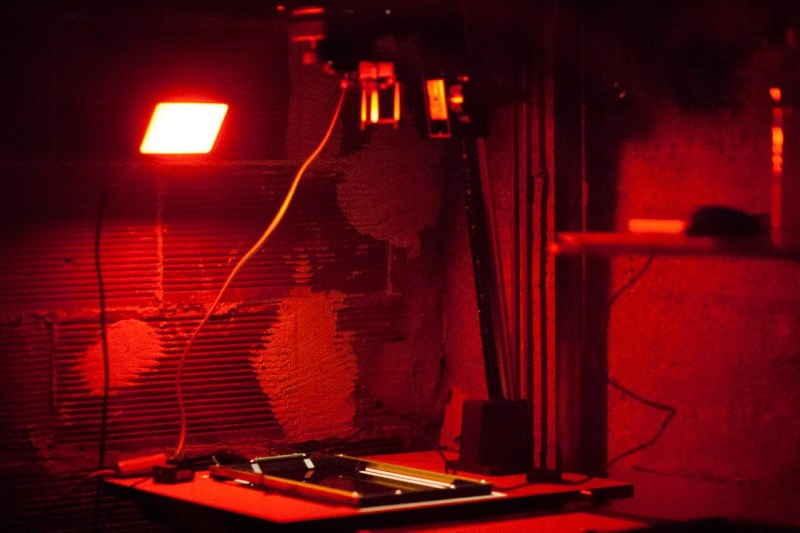As the world becomes more and more digital, there are still a few holdouts from the analog world we’ve left behind. Vinyl records are making quite the comeback, and film photography is still hanging on as well. While records and a turntable have a low barrier for entry, photography is a little more involved, especially when developing the film. But with the right kind of equipment you can bridge the gap from digital to analog with a darkroom setup that takes digital photographs and converts them to analog prints.
The project’s creator, [Muth], has been working on this project since he found a 4K monochrome display. These displays are often used in resin 3D printers, but he thought he could put them to use developing photographs. This is much different from traditional darkroom methods, though. The monochrome display is put into contact with photo-sensitive paper, and then exposed to light. Black pixels will block the light while white pixels allow it through, creating a digital-to-analog negative of sorts. With some calibration done to know exactly how long to expose each “pixel” of the paper, the device can create black-and-white analog images from a digital photograph.
[Muth] notes that this method isn’t quite as good as professional print, but we wouldn’t expect it to be. It creates excellent black-and-white prints with a unique method that we think generates striking results. The 4K displays needed to reproduce this method aren’t too hard to find, either, so it’s fairly accessible to those willing to build a small darkroom to experiment. For those willing to go further, take a look at some other darkroom builds we’ve seen in the past.
















That isn’t all that different from ‘traditional darkroom methods’.
Contact prints were fairly common back in large format days.
Why not put a cell phone display in the film holder. Then you can adjust the size as well as all the other Ansel Adams artsy picture printing methods.
What does B&W photograph paper cost these days?
Seems like an expensive, grainy, ‘digital’ print to me.
Why not use an iPad as your image source? Mine has a resolution of 264 pixels per inch. Write an app that displays a monochrome image for a specific length of time with the photo paper on the screen. Voila… you have created a contact print.
That is what i did: i took a picture with my phone, inverted it an slid the phone in my durst 4×5 enlarger. Exposure is by covering the lens with something. The trick is to put the enlarger slightly out of focus an put the phone on no screen dimming.
Results: https://flickr.com/photos/simski/36497921910/
Just over 1 USD/sheet
Just for the obtusity of it, I’m kinda wanting to see someone do it line scanned with a single RGB LED and an X-Y plotter or 3D printer :-D
Hmm, I’ve got a laser cutter that uses blue laser light. I wonder what would happen if I turned the power really low and exposed photo paper using the laser, either with line scanning or vector paths… I might have to try this at some point.
Putting phone in the film holder is quite many times done. It works great but the resolution is always the problem.
It always comes down to effective DPI. It really doesn’t matter how big the screen is. Well, big screen needs big lens and big lenses cost more money. But in this case you can see the pixels quite well.
It is way easier to print on transparency, printer DPI is much much higher than any display available at the moment.